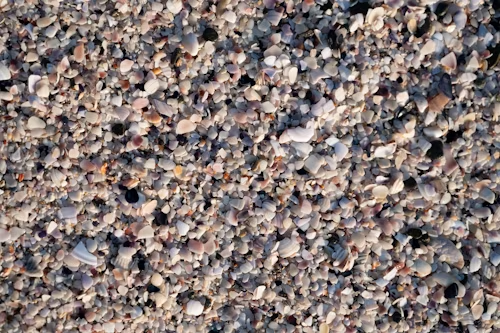Hardscapes live or die by water. That’s the whole story. Permeable pavers move stormwater through the joints into a stone reservoir below; traditional interlocking pavers shed water across the surface to a drain or lawn. Both can look premium and last for years when the base is built right. The win is matching the system to your site.
What “permeable” actually means
- Open-graded base: layers of clean, angular stone (no fines) create a reservoir that temporarily stores rain.
- Permeable joints: larger, stabilized joint aggregate lets water pass between units.
- Infiltrate or exfiltrate: water either soaks into soil beneath or is piped to an approved outlet.
When permeable pavers make sense
- Chronic puddles or clay soils where surface water lingers after storms.
- Tight lots that can’t slope water away without creating ice stripes across walks.
- Codes or HOA incentives that encourage on-site stormwater management.
- Winter sanity: less surface runoff = fewer freeze sheets on adjacent concrete.
When traditional pavers are the better fit
- Simple sites with good slope and obvious outlets for runoff.
- Small projects where a reservoir layer would add complexity without solving a real problem.
- Heavily treed areas that drop debris—traditional joints are faster to sweep and re-sand.
Base construction is different (and non-negotiable)
- Permeable systems: open-graded subbase/reservoir, choker course, geotextile where soils demand it, and careful lift placement to avoid settlement.
- Traditional systems: dense-graded base compacted in lifts, thin screed layer, and edge restraint to lock the field.
- Either way, the first course, pitch, and compaction decide how the next five years go.
Design details that keep both systems out of trouble
- Downspouts: never dump onto the surface. Route into the permeable base or beyond the patio’s edge.
- Borders: use a contrasting soldier course for visibility and to protect edges from traffic.
- Transitions: where patio meets lawn, set a mower-safe hard edge so grass doesn’t invade joints.
- Lighting & utilities: pull sleeves under paths and along borders before the surface goes down.
Maintenance: honest expectations
- Permeable: annual sweep/vacuum to keep joints open; top up joint stone as needed.
- Traditional: blow debris off faces, re-sand joints where edges see wash, reset any lifted spikes each spring.
- Both: keep drain grates clear, spot-clean stains quickly, and trim plants back from faces and steps.
Common mistakes (and how to dodge them)
- No edge restraint on traditional patios → creeping lines by next spring.
- Flat patios against the house → trapped water and stained foundations.
- Fabric under plantable mulch beds → suffocates soil; use fabric only beneath stone.
- Forgetting sleeves → turns a $20 conduit into a $2,000 rework later.
Which should you choose?
Decide by water path, not hype. If your site puddles and can’t shed safely, a permeable system with a real reservoir is worth it. If grade is friendly and outlets are obvious, a well-built traditional patio is efficient, beautiful, and easy to maintain. As you compare designs and quotes—think of searches like permeable paver driveway Liberty Township OH—judge proposals by the boring fundamentals: base, pitch, edge restraint, and a clear water exit.




